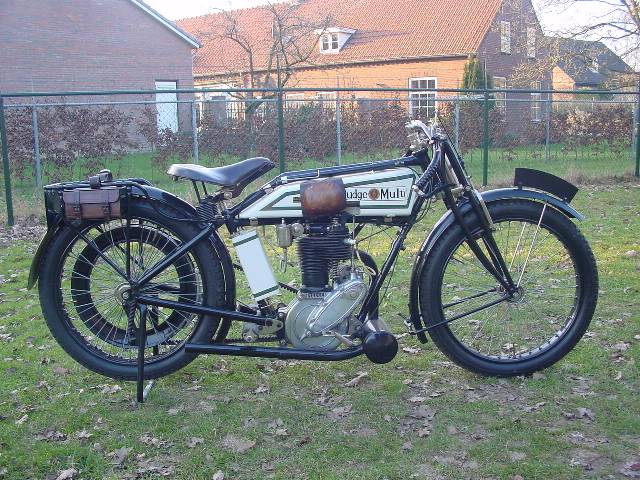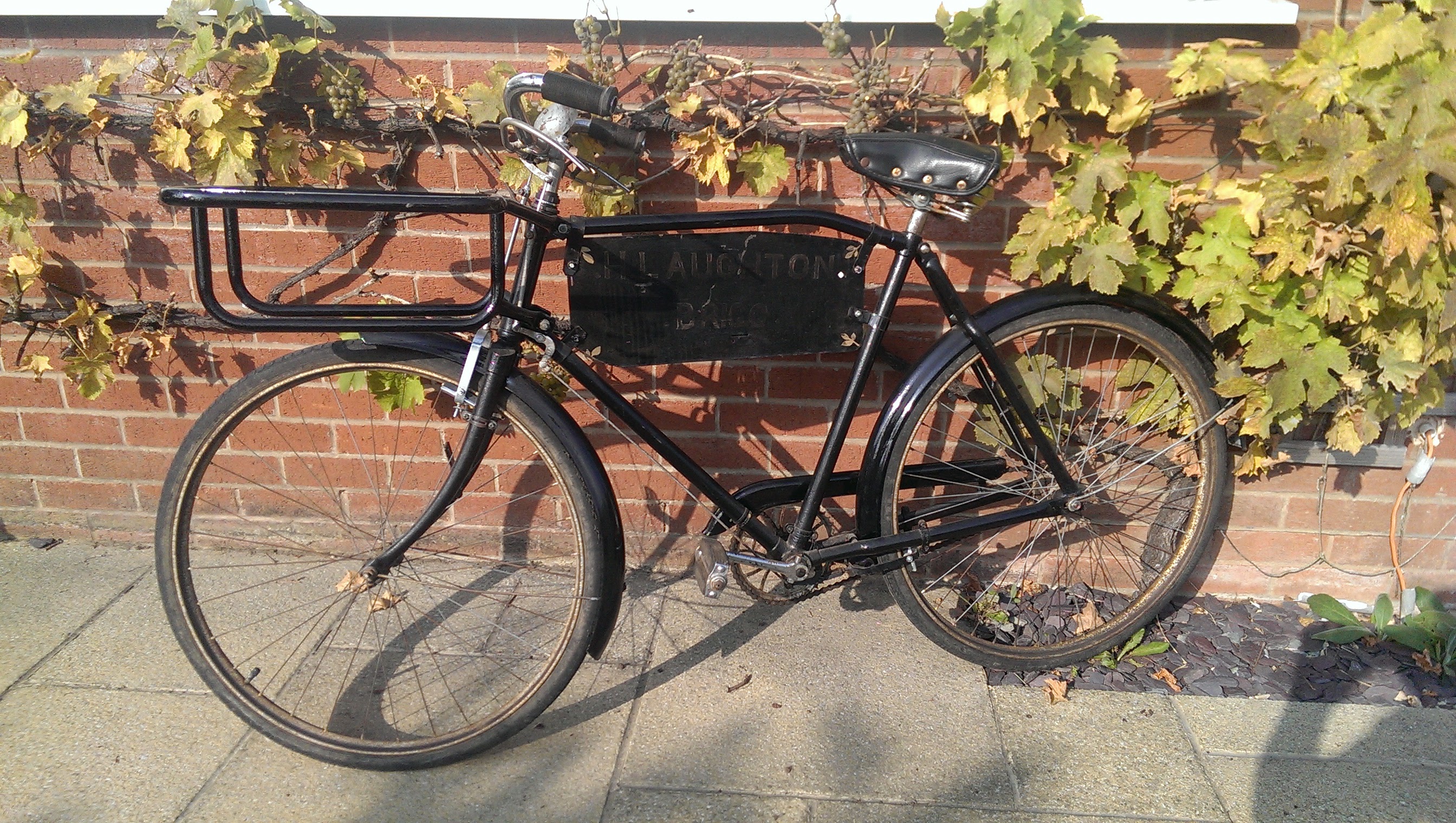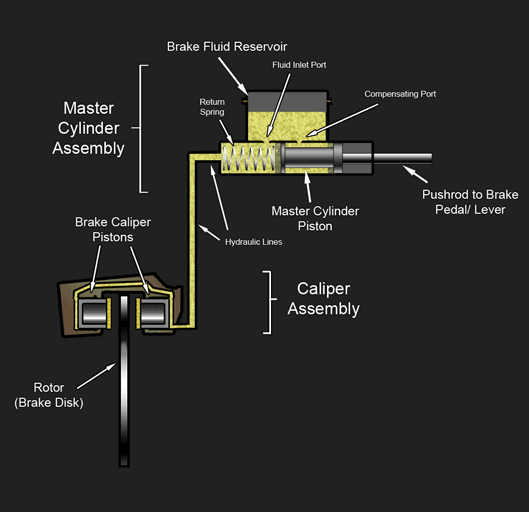|
Ascot-Pullin
Ascot-Pullin Motorcycles was a British motorcycle manufacturer founded by Cyril Pullin as the Ascot Motor & Manufacturing Co Ltd. at Letchworth, Hertfordshire in 1928. An inventor and winner of the 1914 Isle of Man TT, Pullin had been developing ideas for motorcycle designs since 1920 with Stanley Groom, and had patented a two-stroke engine motorcycle with pressed sheet metal frame and forks. After leaving Douglas the first time, Pullin worked with Groom again to refine his ideas and develop and patent the Ascot-Pullin motorcycle. Fewer than 500 were built and sales were poor, resulting in the company's liquidation in 1930. Ascot-Pullin 500 Pullin was an innovator and the Ascot-Pullin 500 OHV single had the engine horizontally mounted and enclosed with a pressed-steel frame. As well as the first use of hydraulic brakes on a motorcycle, Pullin also designed a telescopic centre stand and an adjustable windshield with a windscreen wiper and rear-view mirror, as well as a ful ... [...More Info...] [...Related Items...] OR: [Wikipedia] [Google] [Baidu] |
Ascot-Pullin 500
The Ascot-Pullin 500 was a motorcycle made by Ascot-Pullin Motorcycles in Letchworth, Hertfordshire in 1928. As an updated version of the Pullin motor bicycle of 1919, the Ascot-Pullin 500 overhead valve single was the first time hydraulic brakes were used on a motorcycle. History In 1919, British inventor Cyril Pullin and Stanley L. Groom produced the Pullin motor bicycle, a wheeled machine that included a novel two-stroke engine and extensive manufacture use of steel pressings that anticipated developments by British motorcycle manufacturer Ariel Motorcycles in the late 1950s and Japanese motorcycle manufacturers in 1960s. The bicycle was patented in 1920. Since 1920, Pullin had been working with Stanley Groom to develop and patent a two-stroke motorcycle with a unique design of pressed sheet metal frame and forks. After working on a range of other inventions including the Ascot, Pullin teamed up with Groom again to further develop their ideas and patent the Ascot Pullin mo ... [...More Info...] [...Related Items...] OR: [Wikipedia] [Google] [Baidu] |
Cyril Pullin
Cyril Pullin (18 August 1892 – 23 April 1973) was a British inventor, engineer and motorcycle race driver. His inventions contributed to the rotary engine and the helicopter. His son was the pilot for the first successful British helicopter flight in 1938. Cyril Pullin died in 1973 aged 80. Early life Cyril George Pullin was born 1892 in Wandsworth, London. He became a well known motorcycle racer and in 1914 won the Isle of Man TT race. Racing career In 1914 Cyril Pullin won the Isle of Man TT with a record average of 49.49 mph on a Rudge Multi which had a variable belt drive gearbox giving an effective option of over 20 speeds which made a huge difference on the hills. The race, which ran for over four hours was led by Oliver Godfrey (riding an Indian) and Howard R Davies (on a Sunbeam) who dead heated for second place when Pullin overtook them both to win by only 6.4 seconds. Pullin's success on the day was sadly marred when fellow competitor in the Junior TT Fr ... [...More Info...] [...Related Items...] OR: [Wikipedia] [Google] [Baidu] |
Stock Certificate
In corporate law, a stock certificate (also known as certificate of stock or share certificate) is a legal document that certifies the legal interest (a bundle of several legal rights) of ownership of a specific number of shares (or, under Article 8 of the Uniform Commercial Code, a securities entitlement or pro rata share of a fungible bulk) or stock in a corporation. History A stock certificate is a legal document that certifies the legal interest (a bundle of several legal rights) of ownership of a specific number of shares (or, under Article 8 of the Uniform Commercial Code, a securities entitlement or pro rata share of a fungible bulk) or stock in a corporation. The first such instruments were used in the Netherlands by 1606, and in the United States by the year 1800. Historically, certificates may have been required to evidence entitlement to dividends, with a receipt for the payment being endorsed on the back; and the original certificate may have been required to be ... [...More Info...] [...Related Items...] OR: [Wikipedia] [Google] [Baidu] |
Motorcycle Fork
A motorcycle fork connects a motorcycle's front wheel and axle to its frame, typically via a yoke, also known as a triple clamp, which consists of an upper yoke joined to a lower yoke via a steering stem, a shaft that runs through the steering head, creating the steering axis. Most forks incorporate the front suspension and front brake, and allow the front wheel to rotate about the steering axis so that the bike may be steered. Most handlebars attach to the top clamp in various ways, while clip-on handlebars clamp to the fork tubes, either just above or just below the upper triple clamp. The fork and its attachment points on the frame establish the critical geometric parameters of rake and trail, which play a major role in defining how a motorcycle handles and dives during braking. While the standard telescopic fork arrangement is found with few major differences among mainstream street motorcycles since the 1970s, historically there have been many variations, including trailin ... [...More Info...] [...Related Items...] OR: [Wikipedia] [Google] [Baidu] |
Rotary Engine
The rotary engine is an early type of internal combustion engine, usually designed with an odd number of cylinders per row in a radial configuration. The engine's crankshaft remained stationary in operation, while the entire crankcase and its attached cylinders rotated around it as a unit. Its main application was in aviation, although it also saw use in a few early motorcycles and automobiles. This type of engine was widely used as an alternative to conventional inline engines (straight or V) during World War I and the years immediately preceding that conflict. It has been described as "a very efficient solution to the problems of power output, weight, and reliability". By the early 1920s, the inherent limitations of this type of engine had rendered it obsolete. Description Distinction between "rotary" and "radial" engines A rotary engine is essentially a standard Otto cycle engine, with cylinders arranged radially around a central crankshaft just like a conventional ra ... [...More Info...] [...Related Items...] OR: [Wikipedia] [Google] [Baidu] |
Hercules Cycle And Motor Company
The Hercules Cycle and Motor Company Limited was a British bicycle manufacturer founded on 9 September 1910 in Aston in England.Company registration 111679: Companies House – http://www.companieshouse.gov.uk/ The name Hercules was chosen for its associations of durability and robustness. The company was founded by Edmund and Harry Crane and started life in Coventry Street, Birmingham, England, initially producing 25 bicycles a week.Birmingham Voice, 24 September 2003 History Crane's parents bought the Petros Cycle Company which was subsequently managed by Edmund's mother, Edith. Their children, Harry and Ted, left school at 14 and helped their parents with the business. In 1906, Jack Crane was declared bankrupt and the family moved to Lightwoods Hill. There they sold bikes at auctions. The bankruptcy finding meant they were bought in the mother's name and sold to the sons even though she had also been made bankrupt. In 1911, Harry and Ted rented a derelict house in Coventry ... [...More Info...] [...Related Items...] OR: [Wikipedia] [Google] [Baidu] |
Parragon
Parragon Books Ltd, a United Kingdom publishing company, was formed in 1988 by friends Guy Parr and Paul Anderson. In 2001, it became part of D. C. Thomson & Co. History Parragon began its early years by developing business through overstocks and reprinting dormant titles from key publishers archives such as Penguin Books and HarperCollins. In 1992, Parragon shifted focus through a trial bargain book table placed in Asda's grocery store in Nuneaton. Following the trial's success, Parragon extended their bargain book strategy to other key retailers such as Tesco and Woolworths. As sales increased, these retailers employed Parragon to distribute titles from other major publishers. The distribution business continued until the mid to late 1990s before Parragon decided to concentrate on their own publishing. The distribution business was offloaded to Cork International, who continued to service the grocers until 2004 before their demise. In the late 1990s, Parragon's publishing b ... [...More Info...] [...Related Items...] OR: [Wikipedia] [Google] [Baidu] |
Hydraulic Brake
A hydraulic brake is an arrangement of braking mechanism which uses brake fluid, typically containing glycol ethers or diethylene glycol, to transfer pressure from the controlling mechanism to the braking mechanism. History During 1904, Frederick George Heath (Heath Hydraulic Brake Co., Ltd.), Redditch, England devised and fitted a hydraulic (water/glycerine) brake system to a cycle using a handlebar lever and piston. He obtained patent GB190403651A for “Improvements in hydraulic actuated brakes for cycles and motors”, as well as subsequently for improved flexible rubber hydraulic pipes. In 1908, Ernest Walter Weight of Bristol, England devised and fitted a four-wheel hydraulic (oil) braking system to a motor car. He patented it in Great Britain (GB190800241A) in December 1908, later in Europe and the USA and then exhibited it at the 1909 London Motor Show. His brother, William Herbert Weight improved the patent (GB190921122A) and both were assigned to the Weight Patent Autom ... [...More Info...] [...Related Items...] OR: [Wikipedia] [Google] [Baidu] |
Single-cylinder Engine
A single-cylinder engine, sometimes called a thumper, is a piston engine with one cylinder. This engine is often used for motorcycles, motor scooters, go-karts, all-terrain vehicles, radio-controlled vehicles, portable tools and garden machinery (such as lawnmowers, cultivators, and string trimmers). Single-cylinder engines are made both as 4-strokes and 2-strokes. Characteristics Compared with multi-cylinder engines, single-cylinder engines are usually simpler and compact. Due to the greater potential for airflow around all sides of the cylinder, air cooling is often more effective for single cylinder engines than multi-cylinder engines. This reduces the weight and complexity of air-cooled single-cylinder engines, compared with liquid-cooled engines. Drawbacks of single-cylinder engines include a more pulsating power delivery through each cycle and higher levels of vibration. The uneven power delivery means that often a single-cylinder engine requires a heavier flywheel than ... [...More Info...] [...Related Items...] OR: [Wikipedia] [Google] [Baidu] |
Overhead Valve Engine
An overhead valve (OHV) engine, sometimes called a ''pushrod engine'', is a piston engine whose valves are located in the cylinder head above the combustion chamber. This contrasts with earlier flathead engines, where the valves were located below the combustion chamber in the engine block. Although an overhead camshaft (OHC) engine also has overhead valves, the common usage of the term "overhead valve engine" is limited to engines where the camshaft is located in the engine block. In these traditional OHV engines, the motion of the camshaft is transferred using pushrods (hence the term "pushrod engine") and rocker arms to operate the valves at the top of the engine. Some early intake-over-exhaust engines used a hybrid design combining elements of both side-valves and overhead valves. History Predecessors The first internal combustion engines were based on steam engines and therefore used slide valves. This was the case for the first Otto engine, which was first succe ... [...More Info...] [...Related Items...] OR: [Wikipedia] [Google] [Baidu] |
Ascot Pullin 1929 500cc 1 Cyl Ohv Right
Ascot, Ascott or Askot may refer to: Places Australia * Ascot, Queensland, suburb of Brisbane * Ascot, Queensland (Toowoomba Region), a locality * Ascot Park, South Australia, suburb of Adelaide * Ascot (Ballarat), town near Ballarat in Victoria * Ascot (Bendigo), suburb of Bendigo in Victoria * Ascot Vale, Victoria, suburb of Melbourne ** Electoral district of Ascot Vale, former electoral district of the Victorian Legislative Assembly * Ascot, Western Australia, suburb of Perth ** Electoral district of Ascot, former electoral district of the Western Australia Legislative Assembly Canada * Mont-Bellevue, Quebec, which comprises the former town of Ascot * Ascot Corner, Quebec India * Askot New Zealand * Ascot Park, New Zealand, suburb of Porirua United Kingdom * Ascot, Berkshire ** North Ascot ** South Ascot * Ascott, Buckinghamshire ** Ascott House * Ascott, Oxfordshire * Ascott, Warwickshire * Ascott-under-Wychwood, Oxfordshire * Ascott d'Oyley, Oxfordshire * Ascott Earl ... [...More Info...] [...Related Items...] OR: [Wikipedia] [Google] [Baidu] |
Two-stroke Engine
A two-stroke (or two-stroke cycle) engine is a type of internal combustion engine that completes a power cycle with two strokes (up and down movements) of the piston during one power cycle, this power cycle being completed in one revolution of the crankshaft. A four-stroke engine requires four strokes of the piston to complete a power cycle during two crankshaft revolutions. In a two-stroke engine, the end of the combustion stroke and the beginning of the compression stroke happen simultaneously, with the intake and exhaust (or scavenging) functions occurring at the same time. Two-stroke engines often have a high power-to-weight ratio, power being available in a narrow range of rotational speeds called the power band. Two-stroke engines have fewer moving parts than four-stroke engines. History The first commercial two-stroke engine involving cylinder compression is attributed to Scottish engineer Dugald Clerk, who patented his design in 1881. However, unlike most later two-s ... [...More Info...] [...Related Items...] OR: [Wikipedia] [Google] [Baidu] |






